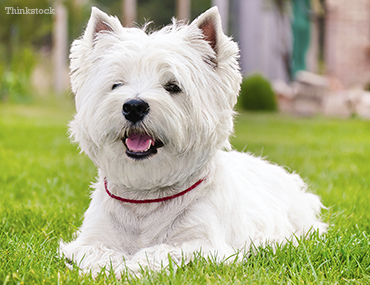Background:
There are accounts of white Scottish breeds as far back as the 1500’s, during the reign of James VI.
The modern West Highland white terrier is generally attributed to Edward Donald Malcolm. After his brown terrier was mistaken for a fox and shot, Malcolm decided to breed his terriers white. Malcolm later refused to take credit for the breed, and asked that it not be named after him.
They were first termed "West Highland white terrier" in Otters and Otter Hunting written by L.C.R Cameron and published in 1908.
The first breed club was set up in 1904 and Recognition by the American Kennel Club came in 1907.
The first West Highlands to enter the United States were Ch. Kiltie and Ch. Rumpus. They were known then as Roseneath Terriers.
Like all terriers the West Highland white is a descendant of small game, hunting dogs.
Sizing up:
- Weight: 15 to 22 lbs
- Height: 10 to 11 inches
- Coat: Double, soft
- Color: White
- Life Expectancy: 15 – 20 years
What’s the West Highland like?
The West Highland white terrier is a loyal and exuberant breed. Each one has his own attitude. Some love to be near people and others are relative loners who will only bond with a single individual. In either case they won’t tolerate rough playtime and can be stubborn and corky at times
The West Highland will train well, but only on his own schedule. When bored, the West Highland might dig or bark excessively and you should be prepared to put a stop to this behavior right away.
The West Highland is a watchdog and would prefer not to stay on the couch. He needs to be challenged with exercise, sports and games.
The West Highland has been known to jump up on a counter or table and steal a few bites of food. You should definitely begin training early so that he knows what is and is not allowed.
The West Highland’s coat doesn’t shed often but does require frequent brushing.
Health:
The West Highland has an impressive life span but will be more susceptible to several conditions:
- Abdominal hernias
- Craniomandibular osteopathy
- Atopic dermatitis
- Globoid cell leukodystophy
- White dog shaker syndrome
Takeaway Points:
- The West Highland isn’t a lap dog
- Each West Highland is an individual
- The West Highland can be stubborn
If you have any questions or concerns, you should always visit or call your veterinarian – they are your best resource to ensure the health and well-being of your pets.
![]()

